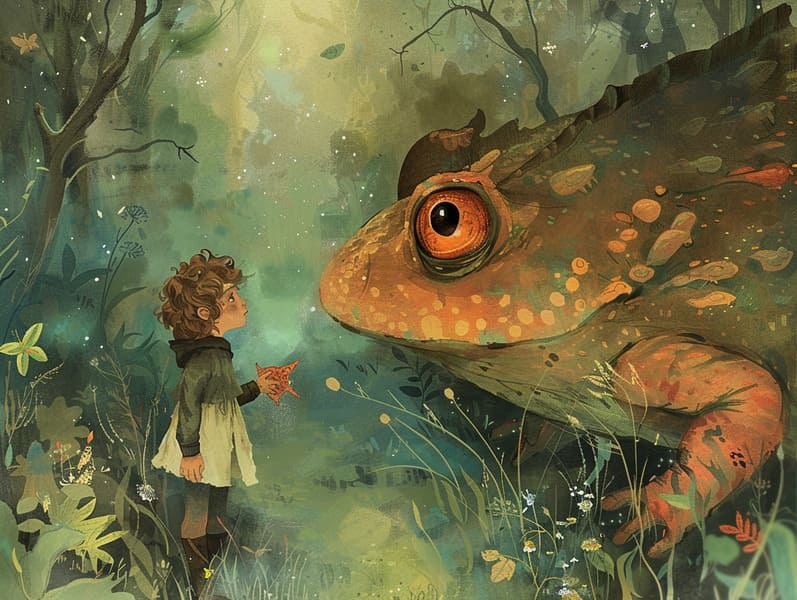
Popular fairy tales have old origins. These tales have been passed down from one generation to the next millennia before they were ever put on paper. They arose from a variety of cultures, including Eastern traditions. They were initially passed along among elders, often carrying themes and messages mirroring the societal norms and beliefs of the time.
Jacob and Wilhelm Grimm, Jacob and Wilhelm (the Grimm brothers), were among the first to compile and release many of these beloved stories. Their collection, "Grimm's Folk Tales," included classics like "The Story of Cinderella," "Hansel and Gretel," and "Snow-White and Rose-Red," which have since become classics in the world of timeless fairy tales. Similarly, the Danish author's imaginative narratives, such as "The Little Mermaid," and "The Story of the Ugly Duckling," have won hearts worldwide, cementing their place in the pantheon of treasured fairy tales.
Though they are old, fairy tales remain as relevant as ever, especially as kids' bedtime tales. These charming stories are now available in different formats, including beautifully illustrated books, magical animations, and digital fairy tales.
Their continued relevance can be connected to several whimsical characteristics:
Vital Lessons: Classic fairy tales often illustrate important moral lessons. Narratives like "The Shepherd Boy and the Wolf" teach the importance of truthfulness, while "The Hare and the Tortoise" point out the qualities of resolve and unassuming nature. These narratives offer young readers clear distinctions between right and wrong, forming their moral compass in a gentle yet meaningful way.
Compassion and Knowledge: Timeless fairy tales frequently involve heroes facing struggles and tests, urging young readers to comprehend with their struggles and support their triumphs. For instance, "The Tale of Beauty and the Beast" points out the virtue of seeing beyond the surface to understand the inner core of a soul, promoting understanding and awareness.
Cultural Understanding: Many ancient fairy tales are saturated in the cultural contexts from which they emerged. Engaging with these tales can provide illuminating insights into different social structures, encouraging a sense of global understanding and perception.
Inventiveness and Imagination: The extraordinary elements in timeless fairy tales—magical kingdoms—stimulate children’s dreaming abilities. These fairy tales lead readers to otherworldly realms, generating inventive ideas and a sense of marvel that persists a lifetime.
Classic fairy tales are not only magical but also informative. They serve as fantastical tools in advancing various thinking and feeling skills in kids. When classic fairy tales are spoken out loud, they foster communication skills by introducing new phrases and complicated sentence structures. This practice also advances auditory perception and attention span, as little ones stay focused, excited to see what happens next.
Furthermore, debating the themes and characters of ancient fairy tales can develop intellectual skills and analytical skills. Young readers are guided to see patterns, expect results, and figure out cause and effect. These deliberations also boost children communicate their thoughts and feelings, cultivating their emotional intelligence.
In today’s digital age, the prevalence of online storybooks has made these get more info stories more acquirable than ever. Websites and web apps provide wide arrays of traditional fairy tales that can be looked at or listened on anytime, anywhere. Fairy tales spoken are particularly well-liked, extending an captivating way for children to be a part of these whimsical stories. Spoken stories and read-to-me stories take characters and settings to life, often enhanced by whimsical music and harmonies that amplify the story adventure.
The unfading fascination of old fairy tales lies in their ability to adjust to present days while sustaining their underlying messages. Contemporary takes of these fairy tales often highlight more inclusive protagonists and modern settings, making them relevant to today’s audience. However, the central morals of braveness, understanding, and impartiality remain unchanged, continuing to move young readers of all ages.
Old fairy tales also offer a sense of contentment and recognition. They confer upon a methodical narrative with a unmistakable beginning, middle, and end, often concluding with the resolution of conflicts and the triumph of morality over immorality. This certainty can be encouraging for young ones, imparting a sense of solidity in an unstable world.
Traditional fairy tales continue to allure and inform new generations, maintaining their delight and importance in modern society. As children's night stories, they serve a perfect blend of captivation and insight, backing moral values, empathy, and creativity. The proliferation of online fairy tales and the sought after status of fairy tales narrated guarantee that these ancient narratives remain attainable to new generations.
By preserving and sharing these fairy tales, we continue to revere the rich tapestry of human imagination and cultural heritage. Whether you are seeing a colorful picture book, enjoying a digital library, or listening to an audio story, the allure of famous fairy tales is always within reach. These stories demonstrate of the undying presence of storytelling and its ability to bind us across eras and regions.
Be it you are browsing a richly illustrated book, experiencing a internet collection, or hearing an read-aloud book, the loveliness of classic fairy tales is always within reach.
These tales emphasize of the unwavering force of tales and its ability to unite us across centuries and lands, establishing a link that delights and instructs alike.